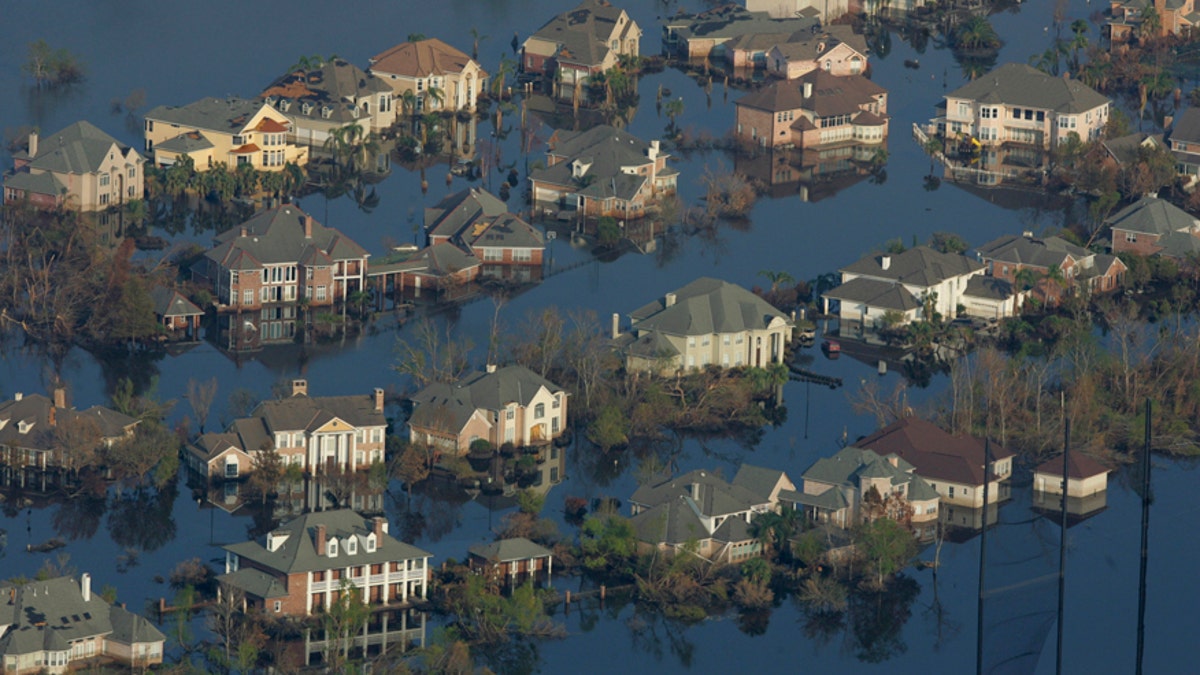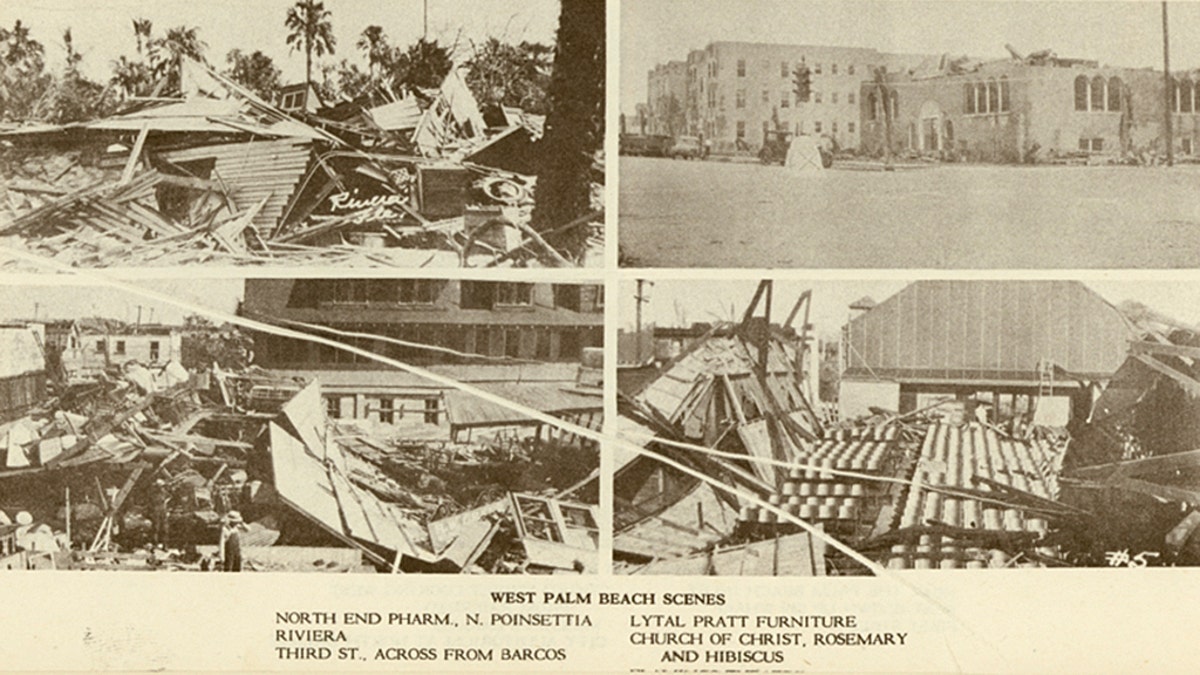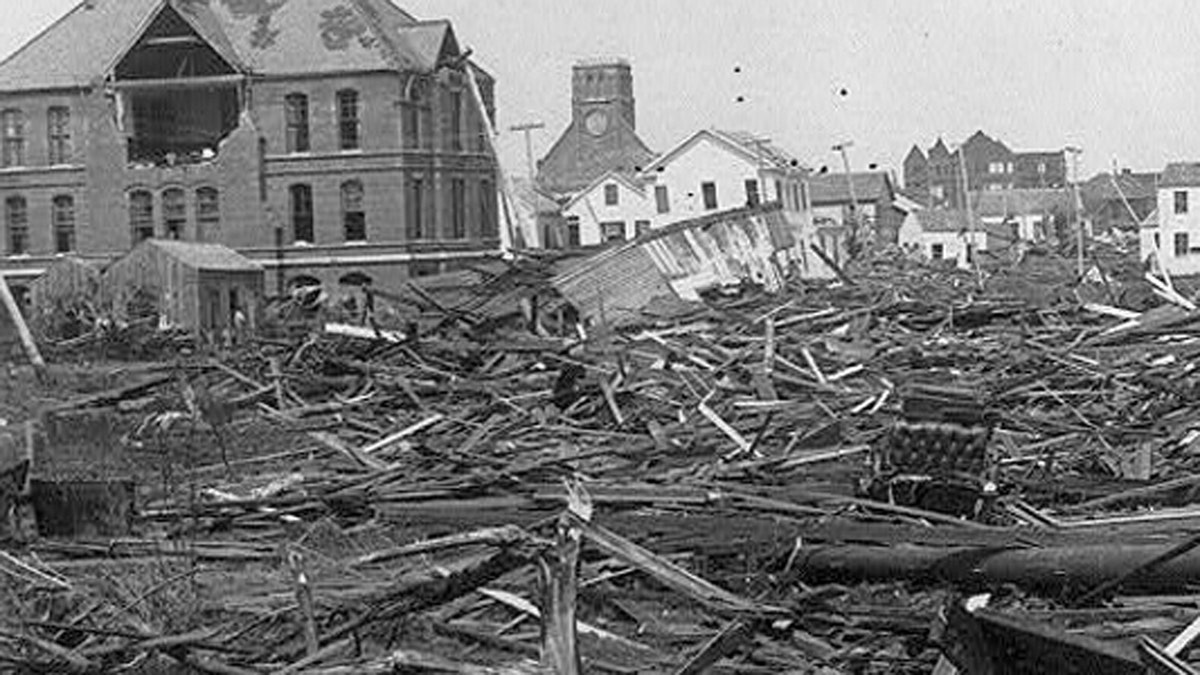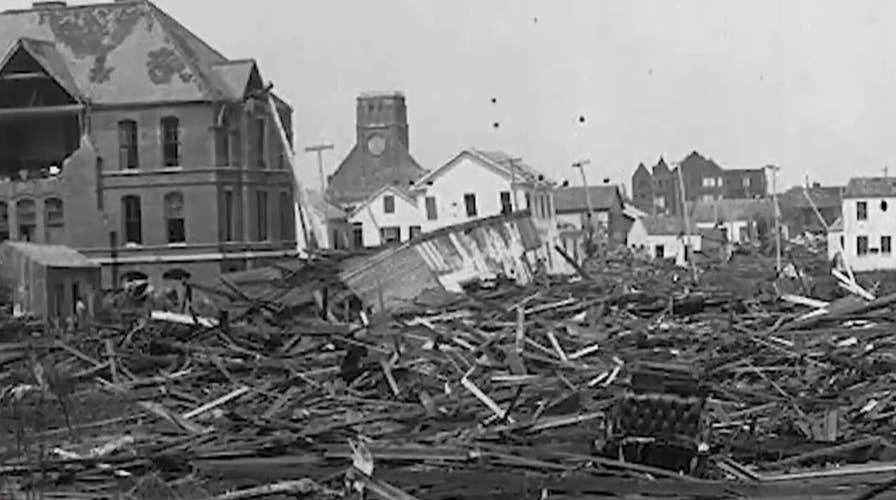A look back at the devastating 1900 Galveston hurricane
An estimated 12,000 lost their lives in the deadliest natural disaster in American history
Between early June and late November, coastal locations from Texas to Maine are vulnerable to the wrath of hurricanes that can cause vast destruction.
On average, 12 tropical storms – six of which become hurricanes – form over the Atlantic Ocean, Caribbean Sea or the Gulf of Mexico during the hurricane season, according to the National Weather Service.
In a typical two-year period, the U.S. coastline is struck by an average of three hurricanes, one of which is classified as a major hurricane with winds of 111 mph or greater. The storms can have winds ranging from 74 to over 157 mph, bringing destruction from storm surge and torrential rains that have the ability to cause massive flooding.
WHAT WAS THE WORST HURRICANE TO HIT THE US? HERE ARE THE COSTLIEST STORMS
Hurricanes have also claimed thousands of lives and caused tens of billions of dollars worth of damage. Here are the deadliest hurricanes to strike the U.S. mainland:
5. "Sea Islands" Hurricane of 1893
The Category 3 hurricane known as the "Sea Islands" hurricane struck the Georgia coast near Savannah on Aug. 27, 1893.
The storm packed winds of 120 mph and a large storm surge to the mainland and off-shore islands of Georgia and South Carolina, according to the NOAA/OAR/Atlantic Oceanographic and Meteorological Laboratory.
Between 1,000 and 2,000 people are believed to have died from the storm, according to the NHC.
4. "Cheniere Caminada" Hurricane of 1893
The major Cheniere Caminada hurricane roared onto the Louisiana coast on Oct. 2, 1893, at Category 4 strength with winds estimated at 133 mph, according to the NOAA.

The Cheniere Caminada Hurricane struck in October 1893. (NOAA)
A storm surge of nearly 18 feet swept away all but one house in the small community of Cheniere Caminada, located west of Grand Island.
"My grandfather was born in February of that year, one of the few babies to survive," Windell Curole, General Manager of the South Lafourche Levee District, told FOX8 in September 2018. "Survival that night was dependent on how long you could hold onto something."
Around 779 of the town’s 1,471 people died in the storm, which is estimated to have killed between 1,100 and 1,400 in total, according to the NHC.
3. Hurricane Katrina in 2005
Hurricane Katrina has the distinction of being tied for the costliest hurricane to strike the mainland U.S. — and it's also one of the deadliest.

Neighborhoods are flooded with oil and water two weeks after Hurricane Katrina went though New Orleans, Sept. 12, 2005. (REUTERS/Carlos Barria)
The storm is blamed for an estimated 1,200 deaths after levees broke and flooded New Orleans and massive storm surge inundated coastal Mississippi and Alabama.
"Despite the fact that inland freshwater floods produced the majority of fatalities due to tropical cyclones during the past few decades, Katrina provides a grim reminder that storm surge poses the greatest potential cause for large loss of life in a single hurricane in this country," the NHC said in its report.
CLICK HERE FOR THE FOX NEWS APP
2. The "Okeechobee Hurricane" of 1928
The second deadliest storm to ever hit the U.S. struck in September 1928 when the Category 4 storm made landfall near Palm Beach on Sept. 16 before turning north over the Florida Peninsula.

Damage from the Okeechobee Hurricane in West Palm Beach, Florida. (NWS)
"This hurricane caused heavy casualties and extensive destruction along its path from the Leeward Islands to Florida," the NHC says in a fact-sheet. "The worst tragedy occurred at inland Lake Okeechobee in Florida, where the hurricane caused a lake surge of 6 to 9 feet that inundated the surrounding area."
The storm's death toll is estimated to be at least 2,500 people, with floodwaters that lasted in the area for weeks.
"The effect of the flood was devastating, and the loss of life, both human and animal, was apocalyptic," according to the NWS.
1. Galveston Hurricane in 1900
The deadliest natural disaster in American history took place on Sept. 8, 1900, when a Category 4 hurricane slammed into Galveston, Texas.

A view of the devastation caused by the Great Galveston Hurricane of 1900 that left between 8,000 to 12,000 dead. (Library of Congress)
Winds over 135 mph and a storm surge of 15 feet inundated the port city of 40,000 people that was filled with end-of-summer tourists.
Between 8,000 to 12,000 people were killed in the storm, and over 3,600 buildings were destroyed.
"Although Galveston was rebuilt, it never reestablished itself as the major port of call it once was," according to the NOAA. "The city was soon overshadowed by Houston, some miles inland and connected to the Gulf of Mexico by a canal."
CLICK HERE FOR MORE WEATHER COVERAGE FROM FOX NEWS
The disaster brought the focus of hurricane prediction into the spotlight, which remains a major part of life today.
Fox News' Nicole Darrah and The Associated Press contributed to this report.






















